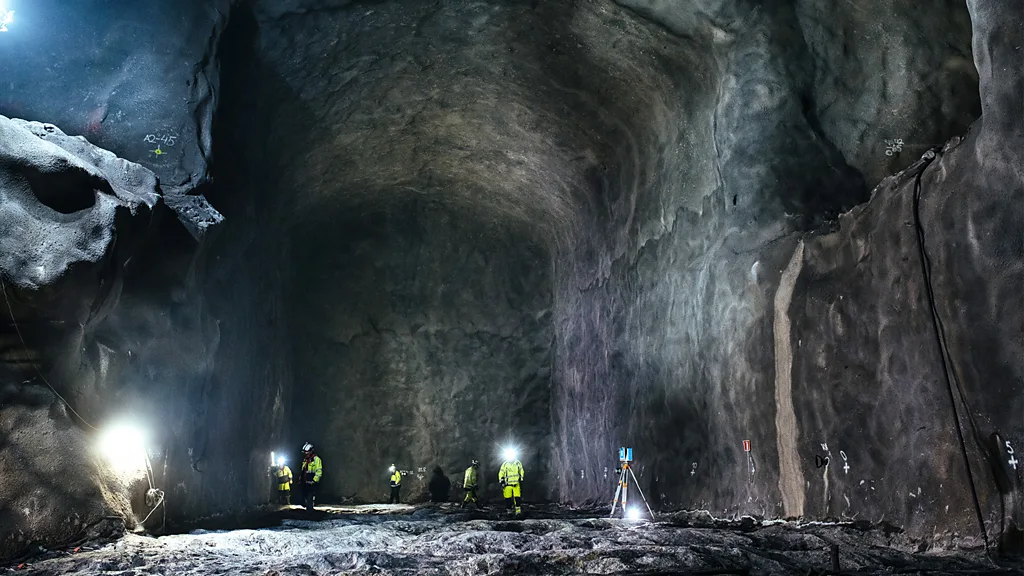
How to Build a Nuclear Waste Tomb for Millennia
Nuclear waste remains toxic for thousands of years, posing a significant challenge for safe storage. Engineers are tasked with building a nuclear waste tomb that will contain hazardous materials for millennia. Beneath the Champagne region of northeastern France, 450 meters underground, scientists work to develop this long-term solution.
Designing Safe Nuclear Waste Storage
France’s National Radioactive Waste Agency (Andra) tests and develops methods for storing nuclear waste deep underground in geological disposal facilities (GDFs). These facilities are planned or under construction in over 20 countries, including Finland, Sweden, the UK, and France. The goal is to ensure nuclear waste remains safely contained for over 100,000 years.
Finland has already begun trial disposal at its deep nuclear waste tomb for spent fuel. Sweden is starting construction at Forsmark, while France prepares its own GDF, Ciego. These massive underground facilities will hold the most dangerous nuclear byproducts, including spent fuel and reactor components.
The Complex Process of Building a Nuclear Waste Tomb
Building a nuclear waste tomb is a monumental task. “It takes over 20 to 30 years to license these facilities, and they operate for about 100 years before being sealed,” explains Jacques Delay, a scientist at the French underground laboratory. Designing and constructing these structures involves thorough geological studies to ensure they last for millennia.
In the UK, potential sites are still under review. Engineers need to confirm that the rock formations, located 500 to 1,000 meters underground, can safely contain nuclear waste. Rocks like granite and clay are ideal, but proximity to water sources or seismic activity can disqualify a site.
Challenges in Finding the Right Location
Finding a suitable site for a nuclear waste tomb isn’t just about geology. Local communities must agree to host the facility, which can be a challenging process. In Sweden, some communities protested against test drilling for nuclear storage, while in Finland, public acceptance was easier due to the long history of nuclear energy use.
“Communities often volunteer because of the promise of jobs and investment,” says Amy Shelton from the UK’s Nuclear Waste Services. In Finland, many locals already work in the nuclear industry, making it easier to gain support.
Why Existing Mines Won’t Work
Why not use abandoned mines for nuclear waste storage? According to Neil Hyatt, chief scientist at the UK’s Nuclear Waste Services, mines weren’t built for long-term nuclear safety. Proper nuclear waste storage requires highly controlled environments, far beyond what traditional mining structures can offer.
In Finland, it takes five years just to dig the ramp leading to the storage level. This precision is crucial to ensure the facility can safely contain waste for thousands of years.
Designing for the Future
A nuclear waste tomb must account for changes over time. High-level nuclear waste generates heat, so containers must be spaced far apart. Intermediate-level waste produces less heat and can be stored more compactly. Engineers also rely on physical barriers, such as specialized containers and surrounding rock, to prevent radiation from escaping.
Technology is also evolving to ensure future generations can maintain and upgrade these facilities. French engineers have developed robots capable of moving waste canisters in emergencies. In Sweden, machines will remotely place copper canisters deep underground with great precision.
Planning for an Uncertain Future
Engineers face a unique challenge: predicting how technology and society will evolve over thousands of years. “We can’t rely on today’s technology for a facility that needs to last for millennia,” says Delay. As a result, engineers build flexibility into their designs, ensuring future generations can repair and upgrade the facility.
In France, there’s a legal requirement for retrievability—any waste stored in the GDF must be retrievable during its operational phase. In the UK, this is a guiding principle rather than a legal mandate. Once the facility is sealed, decisions about the waste will rest with future societies.
A Project for the Long Term
Building a nuclear waste tomb takes hundreds of years, meaning today’s engineers will never see their work completed. What motivates them? “It’s the sense of purpose,” says Anna Porelius from Sweden’s SKB. “We know that how we handle nuclear waste today will affect future generations. That gives us the drive to move forward.”
For more information about nuclear waste storage, visit BBC News.
Explore related content on sustainable energy solutions at Kenkou Land.





